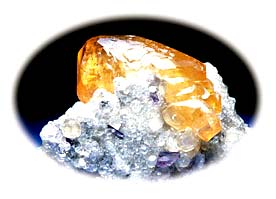This investigation will help you to:
All About Atoms, Jefferson Lab
Follow this link for an introduction of atoms.
Element, Chem4kids.com
This resource provides an explanation of chemical elements as well as provides links to 18 easy-to-understand elements.
What are elements?, NYU/ACF Scientific Visualization laboratory
This online resource offers basic information on the size of atoms.
Gases, Liquids, and Solids,
Purdue
Information offered at this location includes the basic characteristics of solids, liquids, and gases as well as figures and tables that illustrate the differences.
Solid Basics, Chem4kids.com
Investigate the basic properties of solids (i.e., atomic arrangement, freezing point, and crystal structure) by surfing this site. It also provides illustrations to help you understand how solids hold their shape.
Density of Minerals, Webmineral
Visit this online resource to access information on the instruments and formulas used to determine the density of minerals. This web page also serves as a mineralogy database that offers density information in two tables: metallic minerals and nonmetallic minerals.
Water on the Web: Understanding Electrical Conductivity, Water on the Web
Visit this web site to learn about the science of electrical conductivity and its importance. It provides an interactive glossary that makes learning the basics easier.
Factors Influencing Electrical Conductivity, EPA
Discover the variables that affect electrical conductivity by clicking here.
What causes different types of materials to conduct heat at different rates?, Mad Science Network
The second paragraph of this discussion reveals the nature of electrical conductivity in metals vs. nonmetals, such as salts, oxides, etc.
Metals and Non-metals, BBC
A educational site on the physical and chemical properties of metals and non-metals.
Magnetic Properties, University of Surrey, Guildford
An overview of the magnetic nature of minerals and technical information on different types of magnetic minerals is presented at this site.
Thermal Conductivity Science, Hukseflux Thermal Sensors
Learn the basics of measuring thermal conductivity by clicking measurement primarily focusing on soils and granular materials. It also offers a list of conductivity measurements for common household goods such as water, olive oil, cotton, cork, wood, and leather by the orders of magnitude.

